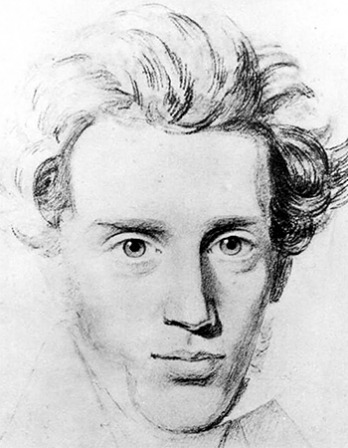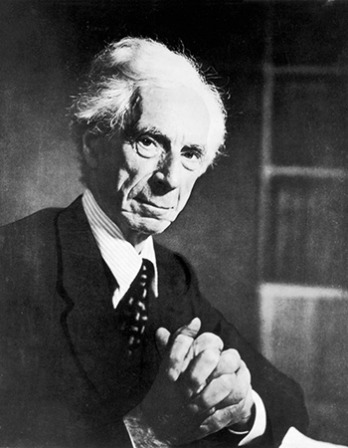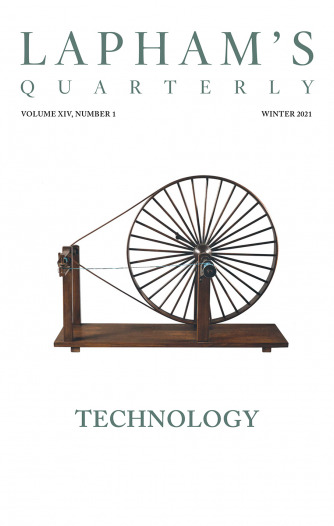All things are filled full of signs, and it is a wise man who can learn about one thing from another.
—Plotinus, 255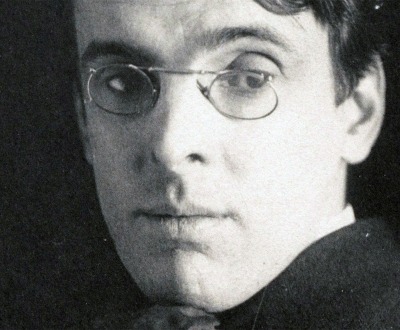
William Butler Yeats, 1904. Photograph by Alice Broughton.
If the paramount project of W.B. Yeats’ professional life was the perfection of the art of poetry, it was intertwined with a personal preoccupation, the study and practice of magic—not in any metaphorical sense, but the dedicated pursuit of supernatural powers based upon the ancient traditions of alchemy and necromancy, which began in his youth and persisted to the end of his long life.
Yeats wrote frankly about his vocation as a magician in several memoirs and in A Vision, a dense astrological treatise he labored over for twenty years. A Protestant Irishman in Victorian Britain, Yeats as a young man was pulled in conflicting directions, but the occult always trumped worldly concerns, because it was so deeply connected with his poetic craft. In 1892, when the Irish patriot John O’Leary admonished the twenty-seven-year-old poet for his devotion to magic at the expense of the Cause, Yeats answered:
Now as to magic. It is surely absurd to hold me “weak” or otherwise because I choose to persist in a study which I decided deliberately four or five years ago to make, next to my poetry, the most important pursuit of my life…If I had not made magic my constant study I could not have written a single word of my Blake book [The Works of William Blake, with Edwin Ellis, 1893], nor would The Countess Kathleen [stage play, 1892] have ever come to exist. The mystical life is the center of all that I do and all that I think and all that I write.
That’s plain speaking, which admits no ambiguity. If one would understand the works of the poet often described as the greatest of his age, it might seem necessary to come to terms with this lifelong passion. Yet apart from the prose works mentioned and a handful of supernatural tales in the vein of Edgar Allan Poe, Yeats never directly addresses the practice of magic in the poetry and plays upon which his magisterial reputation rests. He alluded to it only rarely, with ambiguous metaphors and a select hoard of words charged with esoteric meanings.
Magic imbrued Yeats’ thinking so profoundly that it’s nearly impossible to disentangle the strands without rending the garment. Kathleen Raine, a poet deeply influenced by Yeats, offered a useful formula: “For Yeats magic was not so much a kind of poetry as poetry a kind of magic, and the object of both alike was evocation of energies and knowledge from beyond normal consciousness.” The salient word there is “evocation,” casting the poet as a magus conjuring verbal spirits, not from his imagination but from a higher, or a deeper, place.
When Yeats arrived in London in 1887, the vogue for spiritualism was at its height, and the young poet was immediately sucked into the vortex. The implications of Charles Darwin’s theory of evolution had sunk in and were undermining basic assumptions of the established social order. In 1867 Matthew Arnold had heard the “melancholy, long, withdrawing roar” of the Sea of Faith in retreat, and cults sprang up to fill the gap, to satisfy those who, like Yeats, were searching for something to believe in beyond the material world.
Yeats was already familiar with the basic occult narrative: the magical wisdom of antiquity, predating even the civilizations of Egypt and Babylon, was preserved by an elite brotherhood of seers that handed down intact the doctrines of alchemy, astrology, and the path to eternal life. Belief in this hermetic revelation had flourished at least since the early Renaissance. One of the principal motives of the humanists who ransacked the cloisters of Europe for classical manuscripts was the quest for the treatises of Hermes Trismegistus, first among ancient magi, often identified with Olympian Hermes and the Egyptian god Thoth (and from whom the word hermetic derives). Cosimo de’ Medici, fifteenth-century patron of the humanists, hoped to cheat death with the aid of scripture more ancient than that of Christian religion.
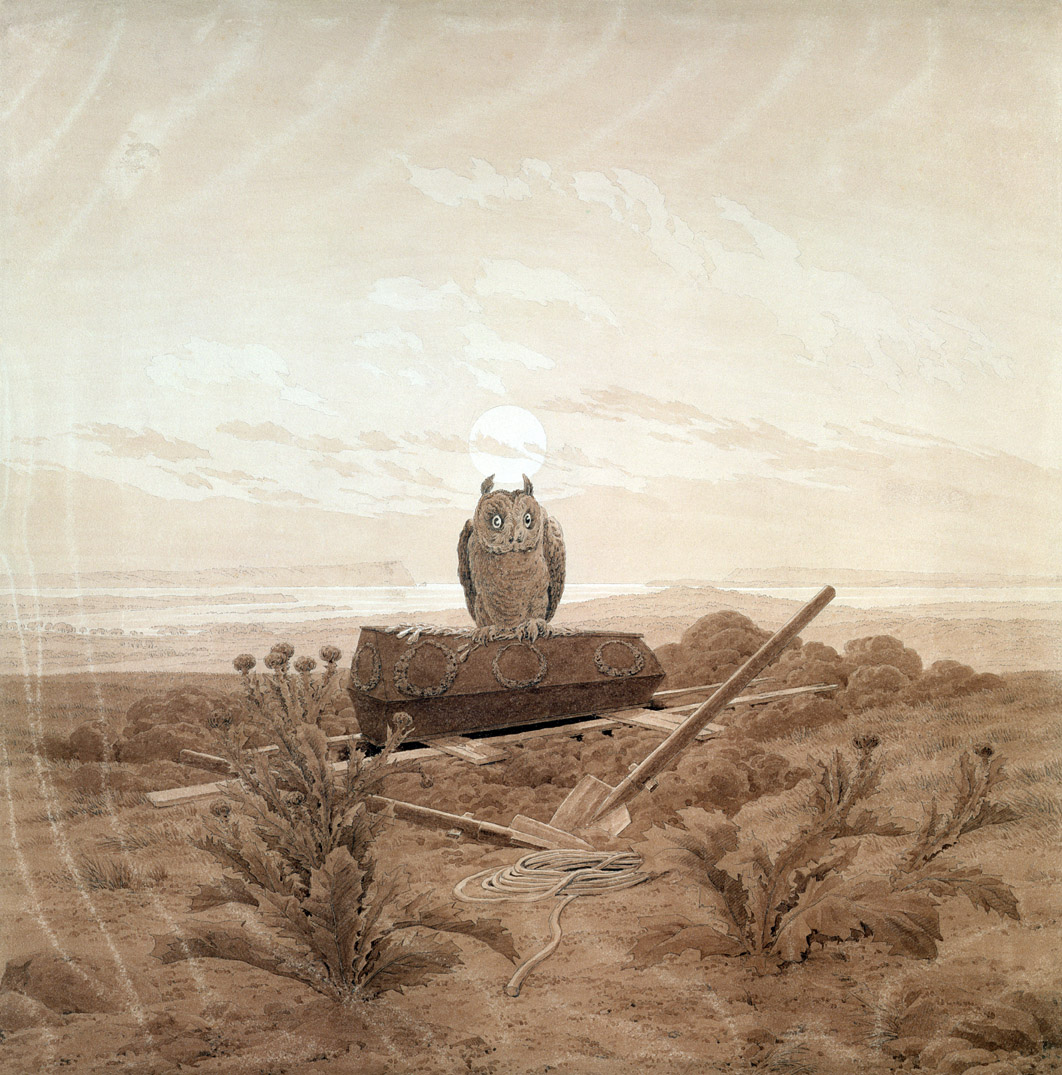
Landscape with Grave, Coffin, and Owl, by Caspar David Friedrich, c. 1836. Hamburger Kunsthalle, Hamburg, Germany.
The Rosicrucian societies that formed in Germany in the early seventeenth century were based upon this principle of the unbroken transmission of the prisca theologia—the one true faith of which all organized religions are but pale, debased reflections—by a succession of necromancers. Yeats would have known by heart the description of the magician’s powers from Christopher Marlowe’s Doctor Faustus:
These metaphysics of magicians,
And necromantic books are heavenly;
Lines, circles, signs, letters, and characters;
Ay, these are those that Faustus most desires.
O, what a world of profit and delight,
Of power, of honor, of omnipotence,
Is promised to the studious artisan!
The hermetic tradition enjoyed a burst of vitality in the second half of the nineteenth century, beginning in France. Eliphas Lévi, the pen name of Abbé Alphonse Louis Constant, described the basic pitch in melodramatic terms, setting the tone for the esoteric groups that soon found a wide following. His first book, translated by Arthur Edward Waite as Transcendental Magic, its Doctrine and Ritual, hooked readers throughout Europe with its phantasmagoric opening sentence, emphasizing images over ideas:
Behind the veil of all the hieratic and mystical allegories of ancient doctrines, behind the darkness and strange ordeals of all initiations, under the seal of all sacred writings, in the ruins of Nineveh or Thebes, on the crumbling stones of old temples and on the blackened visage of the Assyrian or Egyptian sphinx, in the monstrous or marvelous paintings which interpret to the faithful of India the inspired pages of the Vedas, in the cryptic emblems of our old books on alchemy, in the ceremonies practiced at reception by all secret societies, there are found indications of a doctrine which is everywhere the same and everywhere carefully concealed.
The occult movements in the fin de siècle and the early decades of the twentieth century were furiously debated and attracted many public figures. The naturalist Alfred Russel Wallace was an enthusiastic convert whose reputation as a scientist was damaged by his public advocacy of mesmerism and seances; later Arthur Conan Doyle was a fervent believer in spiritualism and a champion of the reality of the fairy world.
Yeats’ involvement in the occult movement had begun two years before his move to London—the same year he published his first poems—when, at the age of twenty, he chaired the first meeting of the Dublin Hermetic Society; the agenda that day was “the wonders of Eastern philosophy.” Soon after his arrival in the capital, he joined the Theosophical Society, a group led by a Russian journalist and world traveler named Helena Petrovna Blavatsky that sought to unite the esoteric tradition of the West with Eastern mysticism. Madame Blavatsky, as she is usually known, claimed to have visited Tibet, where she met a brotherhood of supremely enlightened lamas who preserved the prisca theologia in their mountain fastnesses. Communicating with Madame Blavatsky by telepathy, these sages divulged their arcane knowledge to her and entrusted her with the task of disseminating the Secret Doctrine, as she called it, to the world.
When Yeats met her in London in 1887, Madame Blavatsky had already been exposed as a fraud: rebellious servants at the Theosophical lodge in Madras took a skeptical investigator from London on a tour of the secret panels and other tricks Blavatsky used to hoodwink prospective disciples. She was now living in a house in south London, rebuilding her movement with just three faithful followers. “I was admitted,” Yeats wrote in his memoir, “and found an old woman in a plain loose dark dress: a sort of old Irish peasant woman with an air of humor and audacious power.”
Madame Blavatsky invited Yeats to join the inner circle of the Theosophical Society, the Esoteric Section, and groomed him for a high position in the hierarchy. Yeats’ main interest, however, was conducting magical experiments. He replicated one he had found in the works of an eighteenth-century astrologer; it involved burning a flower to ashes, then placing them under a bell jar in the moonlight for a certain number of nights. If the experiment was successful, “the ghost of the flower would appear hovering over its ashes.” Yeats formed a committee, which “performed the experiment without results.” When he finally parted ways with the Theosophists it wasn’t because of doubts about Madame Blavatsky’s sincerity—in his journal, he rejected the “fraud theory” because it was “wholly unable to cover the facts”—but because the society disapproved of his experiments.
The Theosophists expelled him in 1890, but Yeats had already joined the Hermetic Order of the Golden Dawn, an even more exotic cult, which claimed direct descent from the hermetic tradition of the Renaissance and into remote antiquity. When Yeats first met the order’s leader, MacGregor Mathers, in the British Museum reading room, Mathers, “in a brown velveteen coat, with a gaunt resolute face and an athletic body,” struck him as “a figure of romance”; later Yeats described the seer’s house in Forest Hill, London, as “a romantic place to a little group,” which included at various times Algernon Blackwood, Aleister Crowley, Bram Stoker, Arthur Edward Waite, and William Westcott, Coroner of the Crown.
Yeats joined the Golden Dawn after witnessing impressive displays of Mathers’ magic powers, particularly his ability to stimulate visions. On one occasion he gave Yeats a cardboard symbol and told him to close his eyes. “There rose before me mental images that I could not control: a desert and black Titan raising himself up by his two hands from the middle of a heap of ancient ruins.” Mathers told him that he had seen “a being of the order of Salamanders.” Members took Latin mottoes as cult names; Yeats styled himself Demon Est Deus Inversus, the Devil Is God Inverted.
The Order experienced a crisis early in the new century after it was revealed that the Golden Dawn Cipher Manuscripts (said to have been found in a cupboard), the basis of its rituals and dogma, had been forged by William Westcott. The cult was disgraced, Mathers was expelled, and Westcott resigned to save his position with the Crown. In 1902 the order changed its name to Stella Matutina, “Morning Star.” Yeats was undeterred by the controversy and remained active in the cult as Imperator, a high grade of wizard, until it dissolved in 1922.
It makes more sense to see Yeats’ participation in the Hermetic Order of the Golden Dawn as one origin of his career in the theater rather than contributing anything of intellectual value to his poetry. The order performed rites using props such as wands, cauldrons, and daggers, medievalist baggage straight out of the Pre-Raphaelite school of painting. In W.B. Yeats, Twentieth-Century Magus, a study of the poet’s magical activities based upon his diaries, Susan Johnston Graf describes the rituals of the Golden Dawn in terms that make them sound very much like the ceremonies of a college fraternity: “Members wore traditional robes and symbolic regalia while they intoned elaborately staged dramatic liturgies that they had practiced and memorized. The rituals invoked deities like Isis and Osiris and sometimes involved staged hangings or entombments.”
By the time the Golden Dawn was in its final decline, Yeats had made a major breakthrough in his quest for communication with the spirit world, which took precedence over ritual magic and experimentation. He described this turning point in his life and art:
On the afternoon of October 24th, 1917, four days after my marriage, my wife surprised me by attempting automatic writing. What came in disjointed sentences, in almost illegible writing, was so exciting, sometimes so profound, that I persuaded her to give an hour or two day after day to the unknown writer, and after some half dozen such hours offered to spend what remained of life explaining and piecing together those scattered sentences.
On an American tour in 1919, in a sleeping compartment on a train in Southern California, the spirits manifested themselves to Georgie in a new way, when she began to talk in her sleep. From that point on, Yeats wrote, “almost all communications came in that way. My teachers did not seem to speak out of her sleep but as if from above it, as though it were a tide upon which they floated.” Sweet perfumes sometimes filled the room when the instructors spoke, “now that of incense, now that of violets or roses or some other flower.”
Yeats and his bride, née Georgie Hyde-Lees, made a strange match; he was fifty-two, she was twenty-five, and both presumably were virgins. Yeats had been obsessed throughout much of his adult life by a romantic infatuation with Maud Gonne, a charismatic beauty who zealously advocated the cause of Irish nationalism. She joined the Order of the Golden Dawn briefly, but resigned because she feared it would distract her from the Irish cause. Yeats proposed to her four times without success, though she did consent to a “spiritual marriage”; after she definitively rejected his suit in 1916, he redirected his passion toward her daughter, Iseult. It was only after Iseult refused him that Yeats proposed to Georgie.
Her revelations filled more than fifty notebooks, by Yeats’ count, and served as the basis of A Vision, the summa of his metaphysical thinking, which set forth what he called his “public philosophy.” It propounds an extraordinarily convoluted system that aims to integrate the human personality with the cosmos, a poetical astrology supplemented by charts and diagrams that look like figures in a geometry text. Yeats elaborates a scheme of the lunar phases to classify and categorize the human personality. For phase nineteen, that of the Assertive Man, Yeats chooses as his exemplars “Gabriele d’Annunzio (perhaps), Oscar Wilde, Byron, a certain actress.” According to Yeats biographer Richard Ellmann, “Ezra Pound was originally in the highly subjective phase twelve, but Yeats moved him among the humanitarians of the late objective phases after seeing him feed all the cats at Rapallo.”
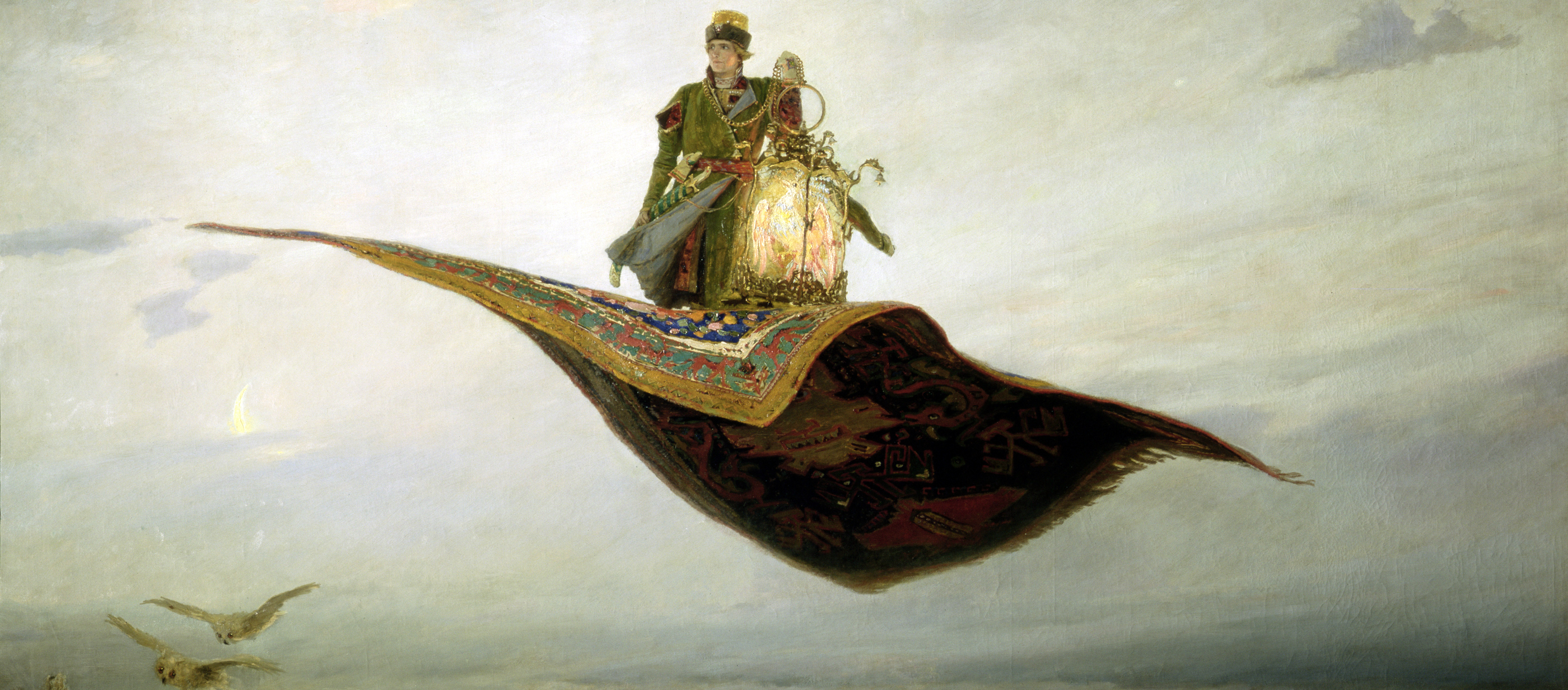
The Magic Carpet, by Viktor Vasnetsov, 1880. Nizhny Novgorod state Art Museum, Russia.
It was, obviously, a highly subjective system, which has found few adherents. Yeats claimed that he wrote A Vision “very much for young men between twenty and thirty,” yet it reads more like a book written for an audience of one: the author. As Ellmann comments in his analysis of “The Second Coming,” a poem more overtly indebted to Yeats’ theory than most, “an awareness of the system was more useful for writing than it is for reading the poem.” Harold Bloom’s study of A Vision, virtually a book within his book Yeats, published in 1970, begins with the withering comment that A Vision “is nothing if it is not wisdom literature, yet it is sometimes very unwise.” Helen Vendler makes a spirited defense of it as a work “primarily about poetry, about the nature of and value of symbolism in poetry,” worthwhile for its insights into Yeats’ views on poetic inspiration and literary history, but she sets the bar so low as to damn with faint praise: “I do not claim greatness for A Vision, but I do deny that it is absurd.”
Yeats’ magical avocation presents a paradox to contemporary readers: how could this supremely disciplined poet, a Nobel laureate, the founder and first director of the Abbey Theatre, a senator of the Irish Free State, ever have attached himself to such transparently bogus cults? Specifically, why would this undoubted genius dismiss the “fraud theory” about Madame Blavatsky after the debunking she had received in Madras?
Vendler offers a plausible answer: “Our present discomfort in imagining Yeats at Madame Blavatsky’s arises from our feeling that there are more respectable ways of approaching the esoteric, forgetting that a concrete encounter is the only one likely to appeal to a mind peculiarly attuned to words and visual symbols.” The magnetic drawing-room seer’s “air of humor and audacious power” inflamed his imagination. No one reads the poetry of Yeats for its lucid logic; he despised rationalism. The principal source of Yeats’ power as a poet was his fabulous rhetorical gift. From the beginning he could turn an unforgettable phrase as deftly as a ballet dancer takes a leap. He devoutly believed that words were magic charms, endowed with an innate, transcendent power to raise poet and reader directly into a higher realm, just as the dancer may believe that the music lifts him soaring from the stage.
Many great minds before and after Yeats have espoused beliefs and engaged in activities that appear false and foolish centuries after the dust has settled, as the passionately disputed controversies of the past have become homework for undergraduates. The closest analog to necromantic Yeats may perhaps be found not in literature but in the figure of Isaac Newton, alchemist. The perennial symbol of rationalism, creator of differential calculus and formulator of the laws of universal gravitation, Newton devoted more than thirty years to the study of alchemy, a fact that disappeared down the memory hole until the twentieth century. After Newton’s death, his alchemical papers were labeled “Not fit to be printed” and dumped in the attic of the Royal Society. In 1936 his alchemical writings were finally catalogued and auctioned at Sotheby’s, provoking a reassessment of his thought.
Newton worked for years on an unpublished revision of his major treatise, the Principia Mathematica, which would have promulgated his belief that God revealed the eternal truths of the cosmos, the prisca theologia, at the dawn of civilization to a chosen handful of sages, and that this knowledge was subsequently lost and obscured until he, Newton, rediscovered it. His student David Gregory revealed in a journal of his private discussions with Newton that the mathematician planned to prove that his laws of gravity had been adumbrated by “the most ancient philosophy,” finding proofs in Egyptian religion, “hieroglyphics and images of the Gods.”
To buttress his primeval pedigree, Newton studied the fragments of magical books attributed to Hermes Trismegistus, and translated one of them, the Emerald Tablet. A basic text of alchemy, it begins, “’Tis true without lying, certain most true; that which is below is like that which is above, that which is above is like that which is below, to do the miracles of one only thing.”
Watch with glittering eyes the whole world around you, because the greatest secrets are always hidden in the most unlikely places. Those who don’t believe in magic will never find it.
—Roald Dahl, 1990If the greatest mathematician of postclassical times believed himself to be the modern exponent of the teachings of Hermes Trismegistus, and performed alchemical experiments in his laboratory in Cambridge, then readers of Yeats may wonder the less at the poet’s passionate devotion to hermetic revelation. Yeats’ credulous acceptance of the incredible is at the core of inspiration. The relationship between poet and muse is sometimes mysterious and sometimes simple, or at any rate direct. Love poetry has always been inspired by the beloved; when Sappho sings, “That man seems to me an equal to the gods, / Whoever he is, sitting across from you, / Listening closely to that/Sweet voice of yours,” the reader doesn’t doubt that she is describing an actual encounter with a living man.
William Wordsworth lived amid the sublime landscape of rural Cumberland, populated by poor people who scratched a poor living from the land; his best poetry is rooted in his observation of nature and his experiences with country folk. In his case, the correlation between inspiration and work is precise, thanks to the journals of his sister Dorothy. For example, she describes how William and she met an old man gathering leeches in the course of a country ramble in 1800 (October 3, to be exact); two years later the experience was transformed by the poet’s imagination into “Resolution and Independence,” a little masterpiece that will always find readers.
In the case of Yeats, however, the relationship is far from simple. Following hermetic teaching, the correspondences between the word and the ideal it reflects are mystical: the symbol has a life of its own, outside the mind. Yeats needed magic not for his thematic material but for the power to accomplish this alchemy, to transmute the wisdom from above into verbal formulas comprehensible here below. Marlowe’s Faustus ponders what task to set for the spirits obedient to his omnipotent will: “I’ll have them fly to India for gold, / Ransack the ocean for orient pearl.”
Yeats set his sights higher: the treasure he sought was not metal gold but the gift of a golden tongue. He was attracted to Madame Blavatsky not because of her feeble, shopworn ideas but rather by her “audacious power”; likewise what drew him to MacGregor Mathers was his miraculous ability to conjure a vision of a fire-dwelling Titan with a cardboard symbol. Yeats’ vehement claim to John O’Leary that the mystical life was the center of all that he did and thought and wrote didn’t mean that he was fascinated by magic; he was getting at something essential. Yeats believed that magic gave him the power to write verses that would partake of the eternal. The proof is in his poetry, for the reader to judge.


